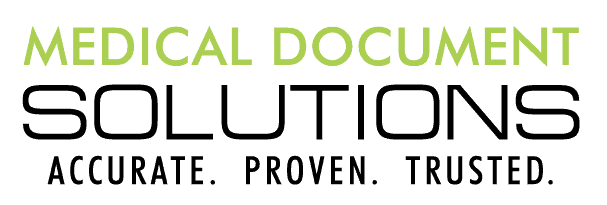Ensuring data quality in your EHR is vital to clinicians’ ability to provide superior patient care – and to avoid undue frustration and burnout.
One of the driving forces behind widespread electronic health record (EHR) adoption has been the mission to improve safety. When physicians have easy, consistent access to a patient’s pertinent current and historical medical data, they are much better equipped to provide the highest quality care. Yet, as noted in a recent Informatics for Health and Social Care study, while, overall, clinical staff noted that EHR use reduced medication errors and improved clinical documentation, they expressed concerns that issues with data quality, due to entry errors or technical problems, could negate those improvements.1
Pamela Rama, MD, Medical Director at MDabstract and a practicing cardiologist, says those findings are not surprising. “An EHR system is only as good as the data that is inside it. When you have accurate, usable data inside your EHR system, it can increase efficiency and provide a comprehensive picture of a patient’s health. It makes it easier to treat the patient because the information you need is right in front of you,” she said. “But when data is missing, it’s a situation that becomes very frustrating for the provider — and quite dangerous for the patient.”
With so many healthcare organizations migrating data between EHR platforms due to mergers, as well as the ongoing deluge of documents clogging a providers EHR in-basket, the risk that important data can get lost in the process rises significantly. As physicians rely on EHRs to provide a “single source of truth” about each patient, Rama highlighted the two important ways that missing or inaccurate data can taint the provider/patient interaction at the point of care.
1. RISKING PATIENT SAFETY
As a cardiologist, Rama said she relies on the EHR to discretely contain her patients’ vital historical health history and current medictions, laboratory tests and diagnostic proce dures.
“Just for example, a provider needs be able to see a patient’s current and previous echocardiograms in the EHR in an abstracted and summarized format highlighting the clinical data points from each test so that over time they can track changes.” she said. “When that information isn’t there or isn’t where you expect to find it in the chart, the provider doesn’t have the necessary information to make good clinical decisions.”
Beyond test results, missing historical data is also of concern. “Being able to trust the chart is so very important. Allergies, medications, other disease processes and earlier procedures – you’d be amazed as to how much patients don’t know or don’t remember about their own history,” she said. “It’s crucial that the information be consistently abstracted into the EHR system and on hand during the patient visit so we can provide the best care. Otherwise, we may order duplicate testing or procedures or accidentally prescribe a medication that was tried before without success or is contraindicated for that patient.”
2. PROVIDER FRUSTRATION AND BURNOUT
The lack of quality data, and consequent risks to patient safety, also profoundly affects providers. As noted in 2018 JAMA study, the professional inefficiencies caused by a lack of data quality can lead to physician burnout, which, in turn, results in a two-fold increase in unprofessional provider behavior and subpar decisions regarding clinical care.2
“When you encounter those gaps in a patient’s clinical data, it’s frustrating,” she said. “It really slows down the whole clinical workflow. Instead of focusing on the patient who is in front of you, we have to search the system for the information needed or manually add in missing medical history. It sets up a situation where physicians are doing clerical work instead of doing what they are supposed to be doing: interpreting data, making diagnoses, treating patients and helping them manage their conditions. It’s easy to see why that lack of quality data exacerbates feelings of frustration and burnout.”
For these reasons, Rama said that healthcare organizations can significantly benefit from working with an expert third-party manual discrete clinical abstraction partner during EHR migrations and quality initiative data capture projects.
“Most providers do not have the staff to do this work successfully in-house, so the knowledge and expertise, as well as the ongoing consistency with quality assurance validation, that an experienced third-party manual abstraction partner provides is so valuable,” she said. “They give the providers the best chance of getting to that ‘single source of truth’ they need from their EHR — and it also allows providers to maintain a chart in real time so they have the most up-to-date information for clinical decision-making.
Providers rely on the data in their EHR systems to make the best clinical decisions for their patients. When data quality is compromised, the provider-patient interaction — and patient care — can suffer. Yet, Rama says, with appropriate planning, provider input and the help of a third-party discrete clinical abstraction partner, healthcare organizations can put themselves in the best possible position to ensure data quality — and, as a result, patient safety and provider satisfaction.
References:
1 Tubaishat, A. “The effect of electronic health records on patient safety: A qualitative exploratory study.” Informatics in Health and Social Care, 2017, doi:10.1080/17538157.2017.1398753.
2 Panagioti, M. et al., “Association Between Physician Burn-out and Patient Safety, Professionalism, and Patient Satisfaction: A Systematic Review and Meta-Analysis,” JAMA Internal Medicine, 2018,
doi:10.1001/jamainternmed.2018.3713,




